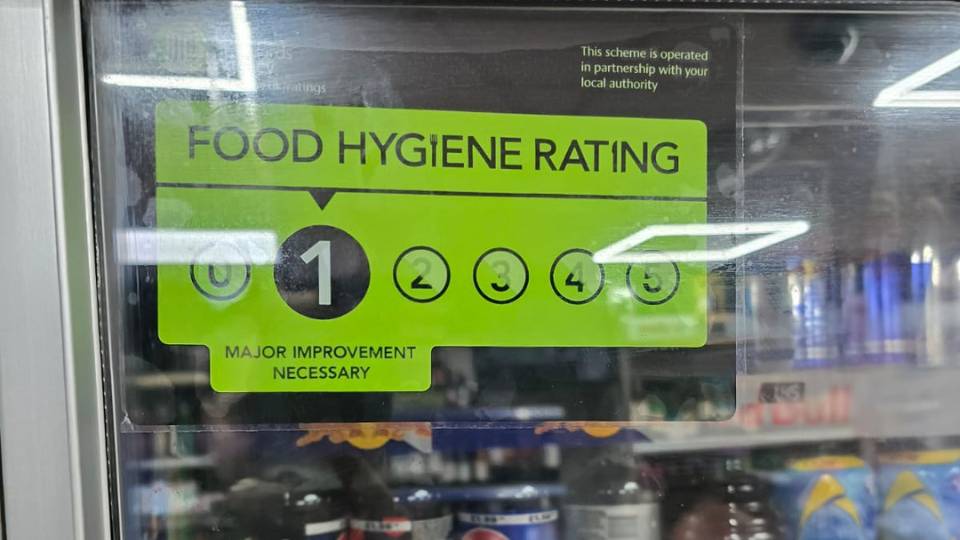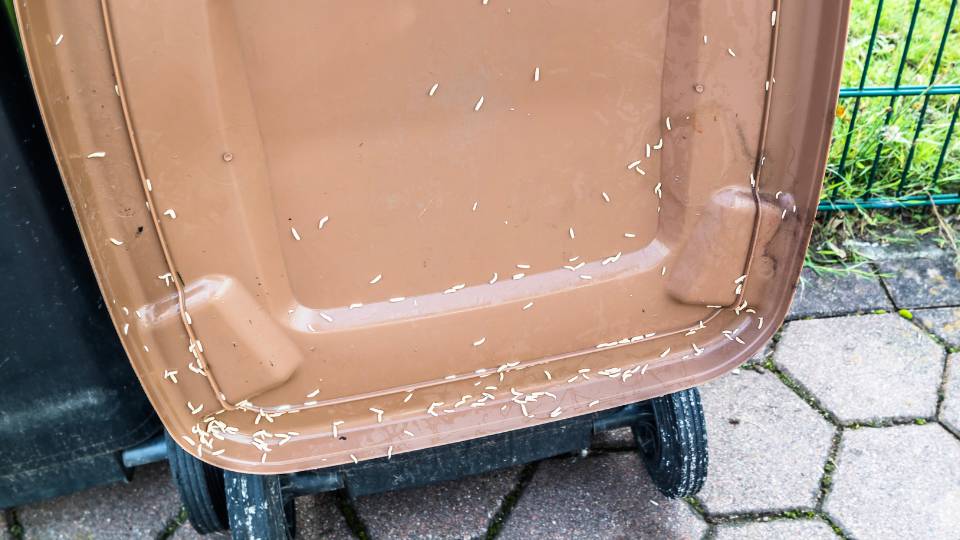
Did the bed bugs bite? Are you unable to sleep tight? Don’t worry. We’ll talk you through the steps of what you can do to get rid of those unwelcome guests.
In this guide, we’ll cover pest control prevention and removal actions you can take for properties, business types & how to handle specific pests.
You’ll also learn how to complete post-removal hygienic treatment measures to make sure they don’t come back again.
Table of contents
- Hygienic Prevention
- Common Causes Of Infestations
- How To Identify An Infestation
- Best Ways To Get Rid Of Common UK Pests
- Pest Control for Schools
- Office Pest Control
- Logistics Pest Control
- Food Business Pest Control
- Types of infestation
- Mole Pest Coltrol
- Bee Pest Control
- Squirel Pest Control
- Bed Bugs Pest Control
- Pest Control for Fleas
- Pest Control For Flies
- UK Pest Control Statistics
- Still need help?
Hygienic Prevention

Hygiene and Preventing Pests in Your Property
Keeping your home pest-free is all about good hygiene and understanding the environment around your property. Here’s how to make your abode less attractive to unwanted visitors:
Consider the Local Ecology
- Location: Where you live has a big impact on the types of pests you might encounter.
Coastal areas might see more cockroaches, ants, and rodents that thrive in seaside towns. Living near a forest can introduce spiders, ticks, and mosquitos.
Wetlands attract mosquitos, flies, and rodents seeking food and shelter.
- Property Type: The kind of home you have also plays a part. Older buildings with cracks and crevices are more inviting to rodents and insects.
Basements can be damp, attracting moisture-loving pests like millipedes and centipedes.
Stone or brick exteriors may be more resistant to burrowing pests than wooden cladding. Artificial lighting around your property can attract night-time insects.
Preventative Measures

With a better understanding of potential invaders, you can take steps to seal them out:
- Seal Entry Points: Use caulk to fill gaps around windows, doors, pipes, and any other exterior openings. Repair any damaged screens and weather stripping.
- Stop Food and Water Sources: Store food in airtight containers and avoid leaving dirty dishes piled up. Wipe down spills and crumbs promptly. Address any leaks or moisture problems that could attract pests.
- Manage Your Garden: Keep firewood stored well away from the house. Cut back overgrown vegetation near the foundations. Eliminate any sources of standing water around your property.
- Bin Management: Use sealed bins and dispose of rubbish regularly. Compost piles should be located away from the house.
By following these tips and staying vigilant, you can create a less hospitable environment for pests and keep your home free from unwanted visitors.
If you find yourself overwhelmed by a pest infestation, it’s always best to consult a professional pest control service.
Common Causes Of Infestations
There are several main reasons why you might find yourself battling unwanted houseguests:
Food and Water

This is a big one. Crumbs, spills, dirty dishes, and overflowing bins are all like neon signs to pests searching for a free meal.
This is particularly a problem in summer when food goes offer quicker with the increased temperatures. Learn how to deal with summer pests here.
Leaky pipes, condensation, and improper drainage can also create attractive watering holes.
Shelter

Pests are looking for a safe haven to nest and raise their young. Cracks, gaps, and holes around windows, doors, and foundations provide easy access for these unwanted intruders.
Cardboard boxes piled high in the attic or basement can also become cosy homes for unwelcome critters.
Nature Calling
Just like us, pests need a place to go to the bathroom. If you have a compost pile right outside your back door or overflowing bins, you might be creating a personal lavatory for some unwelcome visitors.
Hitching a Ride

Sometimes pests sneak in on us unknowingly. Firewood stacked against the house can harbour a whole range of creepy crawlies.
Used cardboard boxes brought in from who-knows-where can be crawling with unwelcome guests.
Neighbours with “Guests”
Unfortunately, if your neighbours have a pest problem, it can easily spill over to your property.
Rodents can burrow through from one house to the next, and insects can easily find their way through small cracks in walls that connect adjoining properties.
How To Identify An Infestation

The signs of a pest infestation can be subtle at first, but with a keen eye (and nose!), you can spot the evidence before things get out of hand.
Here are some key things to look out for:
Sightings
This might seem obvious, but actually seeing live pests is a surefire sign of an infestation. Keep an eye out for scurrying shadows at night, insects crawling on walls, or unwelcome visitors in your pantry.
Droppings
Many pests leave behind little droppings that can serve as a telltale sign. Rodent droppings are small and pellet-shaped, while cockroach droppings look like dark pepper flecks.
Look for these signs in cupboards, drawers, attics, basements, and anywhere else pests might be hiding.
Shed Skin
As insects and some reptiles grow, they shed their outer skin. Finding moulted skins around your home can indicate an infestation of these types of pests.
Nests & Shelters
Rodents and some birds will build nests out of scraps of material they find. These nests might be tucked away in attics, walls, or behind furniture. Webs in corners or under eaves can be a sign of spiders or other web-weaving insects.
Gnaw Marks & Damage
Rodents like mice and rats will gnaw on anything from wires and furniture to food packaging.
Look for teeth marks around potential entry points and on stored items. Some insects, like termites, can also cause damage to wooden structures.
Unusual Smells
A strange musky odour can indicate the presence of rodents or other animals living in your walls or attic.
Cockroaches can give off a greasy or oily smell, while bed bugs have a characteristically sweet, musty odour.
Sounds
Scratching, scampering noises coming from within the walls or ceiling at night can be a sign of nocturnal pests like mice or rats.
If you suspect you have a pest infestation, it’s important to identify the type of pest involved to take appropriate action.
In some cases, you may be able to tackle the problem yourself using store-bought traps or sprays.
However, for larger infestations or persistent problems, it’s always best to consult a professional pest control service.
Best Ways To Get Rid Of Common UK Pests
British homes are susceptible to a number of pests, but fear not!
Here’s a guide to keeping your property pest-free.
Step 1 – Prevention
Seal the Fort
Block any potential entry points for pests with caulk around windows, doors, pipes, and other exterior openings. Fix damaged screens and weather stripping promptly.
Starve the Invaders
Eliminate food sources by storing edibles in airtight containers and keeping crumbs and spills to a minimum. Address leaky pipes and damp areas that attract moisture-loving pests.
Tidy Up Your Garden
Don’t give pests a cosy haven near your home. Store firewood well away, trim overgrown vegetation near the foundation, and eliminate any sources of standing water.
Bin Basics
Use sealed bins and dispose of rubbish regularly. Locate compost piles far from your house to avoid attracting unwanted visitors.
Step 2 – Treatment
Rodents (Mice & Rats)
Prevention: Follow the tips above. Additionally, consider humane traps or bait stations specifically designed for rodents.
Treatment: For persistent infestations, enlist the help of a professional pest control service.
Insects
Prevention: Maintain a clean and crumb-free environment, and seal entry points.
Treatment: For mild infestations, explore natural repellents like peppermint oil or boric acid (always follow safety instructions). For larger problems, opt for professional pest control with targeted insecticides.
Spiders
Prevention: Regularly vacuum cobwebs and discourage flies and other insects that attract spiders.
Treatment: For occasional spiders, a simple vacuum or relocation outdoors might suffice. For persistent problems, consider commercial spider sprays or professional pest control.
Bed Bugs
Prevention: Be cautious when travelling and staying in hotels. Regularly inspect luggage and bedding for signs of bed bugs.
Treatment: DIY methods are often ineffective. Professional pest control with appropriate heat treatment or insecticides is usually necessary.
Remember
Identify the Pest
Knowing the type of pest helps you choose the right treatment strategy.
Safety First
Always follow safety instructions when using any pesticides or traps.
Professional Help
For persistent infestations or complex problems, don’t hesitate to call in a reputable pest control service.
By following these tips and taking a two-pronged approach, you can create a peaceful and pest-free environment for your home.
Pest Control for Schools

The responsibility for pest control in UK schools falls on the school itself. To ensure a healthy environment, schools can educate staff and students on hygiene practices, proper food storage, and reporting potential entry points for pests.
Regularly scheduled inspections by a licensed pest control company can identify problems early on. Common UK school pests include rodents, cockroaches, and insects.
Signs of infestation include droppings, shed skin, unusual smells, and sightings of the pests themselves.
A comprehensive pest management plan, using child-safe methods and targeted treatments when necessary, is key to keeping schools pest-free.
Office Pest Control

Businesses are responsible for keeping their office pest-free.
Educate staff on good hygiene, proper food storage, and reporting potential entry points for pests like rodents, cockroaches, and insects.
Watch for signs of infestation including droppings, unusual smells, or sightings of the pests themselves.
Once a problem is identified, a licensed professional can develop a targeted treatment plan using safe methods.
After the pests are gone, a thorough cleaning and disinfection of the affected area is crucial.
Logistics Pest Control

Pests can wreak havock on a logistics company.
Pests damage goods, spread disease, and hurt your reputation.
Keep your warehouse rodent-, insect-, and bird-free with these tips: seal entry points, address moisture issues, maintain a clean & organised space, store food in airtight containers, and dispose of waste properly.
Regularly inspect for signs of trouble and consider partnering with pest control pros. If an infestation occurs, they’ll create a safe treatment plan.
After removal, disinfect the area thoroughly.
Proactive pest management keeps your logistics operation healthy and successful.
Food Business Pest Control

Food businesses have a zero-tolerance policy for pests! From tiny flies to furry rodents, these critters can contaminate ingredients, damage stock, and spread foodborne illnesses.
Prevention
Seal up your fortress (warehouse) by addressing cracks, leaks, and potential entry points. Keep the food fight going by storing everything in airtight containers and eliminating clutter.
Don’t forget to be a waste warrior – dispose of food scraps promptly in sealed bins.
Stay vigilant
Regularly inspect for signs of trouble and consider partnering with pest control pros for monitoring. If an infestation occurs, they’ll create a safe treatment plan.
Finally, after eviction, a thorough cleaning and disinfection ensures no unwanted guests linger.
By taking these steps, food businesses can create a proactive pest management strategy, safeguarding their reputation, food safety, and public health.
Types of infestation
Below we will look at the various types of the common invaders you can find in commercial & private properties in the UK.
If you have found evidence of a pest but aren’t sure of the source, read on to find out who is the likely culprit.
Mole Pest Coltrol

Moles, those fascinating tunnelers, can wreak havoc on your lawn.
They leave raised ridges and collapsed soil as they hunt for worms, ruining your pristine landscape.
Signs of Trouble
Look for raised ridges, fresh molehills (piles of dirt), wilting plants near tunnels, or digging near structures.
Dealing with Moles
Instead of harsh traps, try humane methods like castor oil treatments (repellent scent), live traps for relocation, or solar-powered vibration deterrents.
Keeping Them Away
A healthy lawn with fewer grubs (their food) is less inviting. Bury wire mesh fencing or plant deterrents like marigolds to keep them out.
By following these steps, you can keep your lawn mole-free and looking its best.
Bee Pest Control

Honeybees are vital pollinators, but large swarms near your home can be a real buzzkill. While they rarely sting unless threatened, their presence can be unnerving.
Signs of Trouble: Look for large clusters of bees around your property, buzzing near entry points like eaves or attics, or a constant hum around a specific area.
Bee Removal with Care: Always prioritise bee relocation over extermination. Contact a licensed beekeeper or pest control company specialising in humane bee removal. They can safely remove the hive and relocate it to a more suitable location.
Prevention: Seal potential entry points like cracks around windows, doors, and soffits. Avoid leaving sugary drinks or food outdoors, and discourage nesting by removing potential hive sites like birdhouses or hollow structures near your home.
By taking these steps, you can coexist peacefully with these valuable pollinators and keep them from setting up shop in unwanted areas.
Squirel Pest Control

Squirrels, those acrobatic chewers, can wreak havoc on your home. They gnaw wires, damage siding, and become noisy attic tenants.
Spot the Signs: Listen for nighttime scratching, look for chewed wires or entry holes, and watch for piles of nutshells near your house.
Evict Humanely: Use one-way doors to let them leave, not return. Alternatively, trap and relocate them with a wildlife pro. Avoid harmful poisons.
Block Their Access: Seal entry points, trim tree branches near your house, and remove food sources like birdseed and open garbage cans.
By taking these steps, you can keep these adorable nuisances out and your home safe.
Bed Bugs Pest Control

Bed bugs are hitchhiking horrors that can infest your home and disrupt your sleep. Their bites leave itchy welts, and their presence is unsettling.
Signs of Infestation: Look for small, reddish-brown insects, shed skins, or dark spots (bed bug droppings) on mattresses, furniture, or near baseboards.
Don’t Go It Alone: DIY methods are often ineffective for bed bugs. Call a professional pest control service specialising in heat treatment or targeted insecticides for complete eradication.
Prevention is Key: Be cautious when traveling and staying in hotels. Regularly inspect luggage and bedding for signs of bed bugs. Vacuum frequently and use mattress encasements to prevent them from hiding.
By taking these steps and seeking professional help if needed, you can reclaim your home from these unwanted bloodsuckers and ensure a peaceful sleep.
Pest Control for Fleas

These tiny bloodsuckers jump onto your pet and into your home, causing misery with their bites.
Spot the Signs: Look for small, reddish-brown fleas or black droppings on your pet’s fur, bedding, or furniture. Excessive scratching by your furry friend is another telltale sign.
Evict the Invaders: Treat your pet with vet-approved medication to eliminate the source. Vacuum carpets, furniture, and baseboards thoroughly, disposing of the bag immediately.
Consider a flea bomb or fogger, but always follow safety instructions and leave the premises during treatment.
Keep Them Out: Regularly use flea prevention medication on your pet, wash their bedding often, and vacuum frequently. Address any wildlife near your home, as they can be carriers of fleas.
By tackling both your pet and your home, you can banish these pests and restore peace (and itch-free nights) for everyone.
Pest Control For Flies

Flies are more than just annoying nuisances buzzing around your food. They can contaminate surfaces and spread bacteria, posing a health risk.
Spot the Scuttle Butts: You’ll see them flying around, landing on surfaces, or congregating near food sources. Keep an eye out for house flies, fruit flies, or drain flies, depending on the location.
Zap the Zappers: Fly swatters and sticky traps can help catch some, but for larger infestations, consider fly traps or baits that target specific species.
Make Your Home Uninviting: Eliminate fly attractants! Store food properly, clean up spills promptly, and dispose of garbage regularly in sealed bins. Address moisture issues that might attract drain flies.
Seal Up the Cracks: Repair any gaps around windows, doors, and vents to prevent them from entering your home in the first place.
By following these steps, you can create a less fly-friendly environment and keep these disease-carrying pests at bay.
UK Pest Control Statistics
Local Authority Involvement
- Traditionally, most local authorities provided pest control services to residents.
- Due to budget cuts, this number has shrunk, with councils increasingly outsourcing to private companies BPCA National Survey 2013.
- Around 15% of local authorities no longer offer pest control services BPCA National Survey 2013.
Pest Infestation Rates
- A 2016 survey by the British Pest Control Association (BPCA) showed a significant decrease in call-outs compared to previous years BPCA National Survey 2016.
- However, a 2023 report by Direct Line Group highlights a rise in residential rodent infestations, with councils dealing with over 600 per day Direct Line Group.
Still need help?
If you aren’t confident that you can tackle getting rid of the vagrants we can happily provide you with assistance.
With a network of pest control operators positioned around the UK we can get a specialist out to your property to ensure that the infestation is cleared.
To get a quote, give us a quick call on 01205338123.








